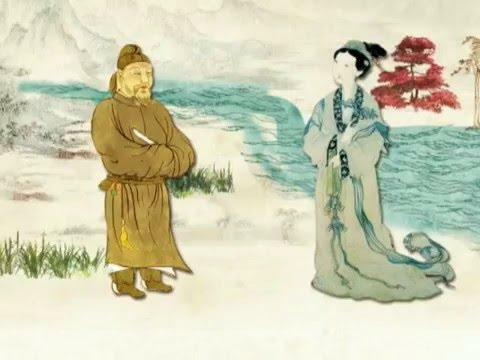Ancient civilizations of China

When we talk about the different peoples of the Old Age We tend to focus on Western civilizations, forgetting other important areas such as Asia and America. To comment on some of the most relevant towns in the Asian area, in this lesson from a PROFESSOR we are going to offer you a summary on ancient civilizations of China.
To talk about the ancient civilizations of China, we must comment on the time known as Ancient Era. This Era can be placed between the Xia dynasty and the so-called Warring States period.
Within the ancient civilizations we must talk about those of China. The Xia dynasty can be placed between the XXI centuries a. C. and the sixteenth century a. C. and is known as the first of all the dynasties of the Chinese people. It is the first of the Chinese cultures for which we have enough sources to know for sure that it was a real people, and not a mythological one.
The dynasty maintained its center of power south of Shanxi and west of Henan, its center being on the important Yellow River. The river had significant rises, which caused great floods in Chinese cities, but the people of Xia were able to stop these rises so that their city could progress.
Xia culture based its economy on agriculture, which was made in large quantities due to the great destruction caused by the Yellow River. They also did crafts, very much in the style of the Bronze Age, although with some improved techniques. Here we discover what the early agricultural civilizations of our planet.
The last king of Xia, Jie, was a corrupt king with many deficiencies, which caused General Tang managed to defeat the Xia dynasty, forming his own dynasty, the so-called Shang.

Image: Uchina
The Shang dynasty was the second dynasty of China, existing between the years 1766 a. C. and 1122 a. C. approximately. Like the Xia, the Shang dynasty had a huge area of influence around the Yellow River although, being a later stage, we have more sources and we know its extent to a better extent.
Thanks to the archaeological remains we can draw several conclusions about the way of life of the Shang dynasty, among which we can mention their way of life based on the agriculture and livestock, the use of animal parts as medicine and a large number of items created using bronze.
The last king of the Shang dynasty was Di Xin, who committed suicide when he saw that his entire army had been defeated by the Zhou people, although according to other sources part of his army went to the opposite side causing the defeat of the Shang dynasty.

Image: Stories of our History
The Zhou dynasty was the one that ruled in China from 1122 a. C. until 249 BC C. being the last of the Chinese dynasties of kings, since their successors were the so-called imperial dynasties.
To continue with this summary we must talk about the main features of this dynasty, since in it we find unique things, not only with respect to its predecessors, but also with respect to its European contemporaries. The main characteristics of the Zhou dynasty are as follows:
- It was the Chinese civilization more extensive until then, occupying almost everything that we currently call China.
- Every city had a leader, chosen by the kings of Zhou, since it was impossible to control the entire region from a single area.
- The main economic source was the agricultural, dividing the lands into plots and these were given to the peasants.
- It was the time of the most important chinese philosophers, the most important of them being Confucius, whose influence on later Chinese culture is unquestionable.
The art that appeared at this time is similar to that of Europe and America in the same years, seeking the representation of beings above mere mortals.
Unlike previous dynasties the Zhou can be divided into two periods, the western stage that are those that governed until 771 a. C. being the government with the greatest power and hardly any divisions, and the eastern stage, being these a government almost symbolic and usually divided into the periods of the Springs and the Autumns, and the period of the Kingdoms Fighters
Spring and Autumn Period
This period can be placed between 722 a. C. and 481 a. C. For years China maintained enormous economic and territorial growth, but the division of the state into a series of cities made that these began to have greater power than the central government, finally causing a confrontation between the most important.
The small city-states were uniting with each other, until finally large regions were formed, these being Qi, Zhao, Chu, Yan, Han, Wei and Qin. These were the states that clashed in the last stage of the Zhou dynasty.
Warring States Period
The second part of the Zhou dynasty took place between the 5th century BC. C. and the unification of all kingdoms by Qin. It was a time of great military prosperity, creating numerous weapons and forms of fighting, since all the states participated in the battles of China, although only 7 were the largest.
Of all the states it was Qin who got the victory, conquered the rest of the great states and unifying all of them in a single Empire, ending the monarchical form of government. The Qin model remained for centuries, being imitated even by later dynasties.

Image: Uchina
